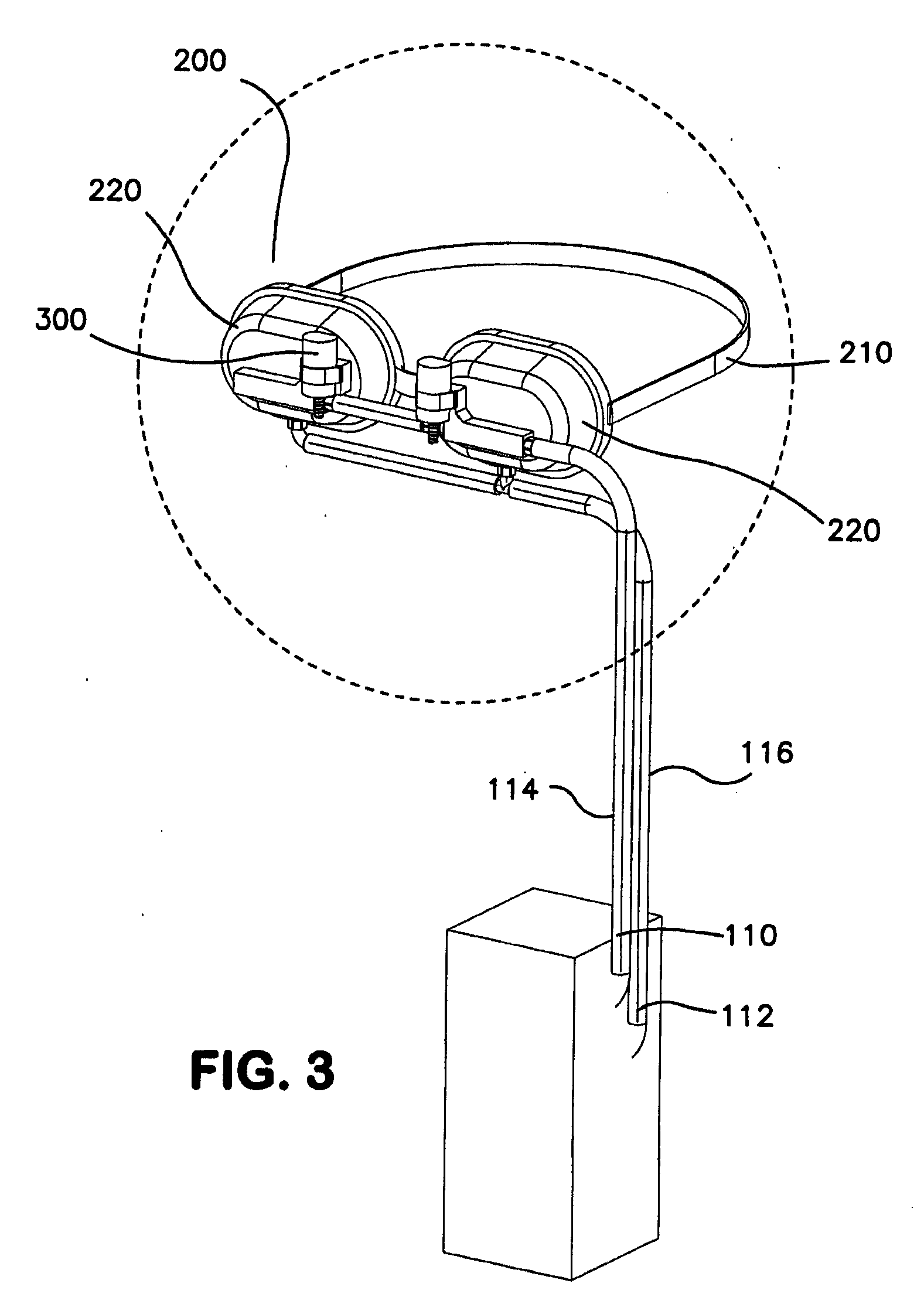Method and apparatus for treating meibomian gland dysfunction employing fluid jet
a technology of meibomian gland and fluid jet, which is applied in the field of treatment can solve the problems of accelerated evaporation, itchiness, burning, and dryness of the meibomian gland, and achieve the effects of reducing the risk of eczema, and improving the quality of li
- Summary
- Abstract
- Description
- Claims
- Application Information
AI Technical Summary
Problems solved by technology
Method used
Image
Examples
Embodiment Construction
[0042] While the present invention will be described more fully hereinafter, it is to be understood at the outset that persons of skill in the art may modify the invention herein described while still achieving the favorable results of this invention. Accordingly, the description that follows is to be understood as a broad teaching disclosure directed to persons of skill in the appropriate arts, and not as limiting upon the present invention.
[0043] Referring now to FIG. 1, the location of the meibomian glands M are shown on the upper and lower eyelids. As briefly stated herein above, the upper lid contains approximately 25 meibomian glands and the lower lid contains approximately 20 meibomian glands. As shown in FIG. 2, each gland includes a channel C into which the secretion flows and an orifice O which opens on to the eyelid margin and through which the secretion must flow in order to be added to the tear film upon blinking. It will be seen that the glands are of different size, ...
PUM
 Login to View More
Login to View More Abstract
Description
Claims
Application Information
 Login to View More
Login to View More - R&D
- Intellectual Property
- Life Sciences
- Materials
- Tech Scout
- Unparalleled Data Quality
- Higher Quality Content
- 60% Fewer Hallucinations
Browse by: Latest US Patents, China's latest patents, Technical Efficacy Thesaurus, Application Domain, Technology Topic, Popular Technical Reports.
© 2025 PatSnap. All rights reserved.Legal|Privacy policy|Modern Slavery Act Transparency Statement|Sitemap|About US| Contact US: help@patsnap.com



